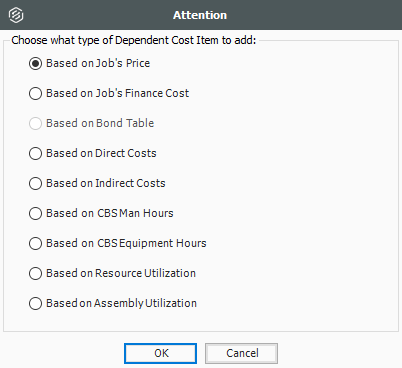Content

A practitioner with appropriate training and certification is an accountant. First, definition of account, and how accounts in the Chart of Accounts are the organizing What is a Contra Asset Account: Definition and Example basis of an accounting system. An individual account is an electronic or paper record stating a financial balance for a specific item, class of items, or purpose.

Conta revenue account examples include sales returns, sales allowance, and discounts. Contra asset accounts also provide a clear picture of the companies’ accumulation of assets. Similarly, these accounts can also be essential in various calculations. As mentioned, companies do not represent these accounts on the balance sheet.
How to Adjust Entries on a Trial Balance for Note Payable
In simplistic terms, this means that Assets are accounts viewed as having a future value to the company (i.e. cash, accounts receivable, equipment, computers). Liabilities, conversely, would include items that are obligations of the company (i.e. loans, accounts payable, mortgages, debts). Not all accounts work additively with each other on the primary financial accounting reports. Sometimes one account works to offset the impact of another account of the same type. The so-called contra account work against other accounts in this way. And, in some situations, the contra accounts reverse the debit and credit rules from Exhibit 1 above.
Contra flagyl prezzo asset accounts help companies to record any reductions to their non-current and current assets. By doing so, they can bring their asset accounts to a more accurate position. Both the asset and the corresponding CA accounts must be stated clearly in the balance sheet.
Contra Asset, Contra Liability and Contra Equity
Despite being classified as a liability, it functions more like an asset because benefits are provided to the company. While technically classified as an asset, it functions closer to a liability as it reduces the value of the asset it is paired with. We can see how the $10,000 allowance for doubtful accounts offsets the $100,000 A/R account from our illustrative example above (i.e. the account decreases the carrying value of A/R).
The debit balance of the asset account and the credit balance of the contra asset account determine the net value of the asset. The contra revenue account is a reduction from gross revenue, which results in net revenue. These transactions are reported in one or more contra revenue accounts, which usually have a debit balance and reduce the total amount of the company’s net revenue. This account appears next to the current asset Accounts Receivable.
Contra AccountDefinition, Types, Uses, and How to Set them Up
The most common way to account for contra accounts is to attach the regular account with its connected contra account underneath it on a company’s balance sheet. For example, the depreciation value will be listed underneath the value of a vehicle, or the allowance of bad debts will be attached to the accounts receivable. Another example could be when a product is bought and is returned at face value because of a defect. The contra return on sales account will be debited while the normal cash account will be credited. There are four key types of contra accounts—contra asset, contra liability, contra equity, and contra revenue.
A Beginner’s Guide to Using Contra Asset Accounts – The Motley Fool
A Beginner’s Guide to Using Contra Asset Accounts.
Posted: Wed, 18 May 2022 07:00:00 GMT [source]
Transactions enter the journal when they occur, as the 2nd step in the accounting cycle. As a 4th step, they check entries with a trial balance and correct them if necessary. The final stage occurs when the firm publishes financial statements. Note, however, however, that public companies must also complete the cycle by having 3rd-Party auditors review them and issue audit opinions, and then filing them with securities authorities. A classic example of human error creating a credit balance on in an asset account is bouncing a check. If you write a check for more than is in your bank account you are going to going to go from a debit balance to a credit balance.
You may notice from the Chart of accounts in Exhibit 5 below, that “Accounts receivable” and “Allowance for doubtful accounts” are both asset https://business-accounting.net/ accounts. “Allowance for doubtful accounts,” however, is a contra asset account that reduces the impact contribution by Accounts receivable.
What Are Examples of a Contra Asset Account?
Key examples of contra asset accounts include allowance for doubtful accounts and accumulated depreciation. Allowance for doubtful accounts reduce accounts receivable, while accumulated deprecation is used to reduce the value of a fixed asset.
If the firm purchased with its cash, it could credit asset account “101, Cash on hand” to restore the Balance sheet balance. Suppose, for example, that a firm acquires assets valued at $100,000. This impact could occur in “Account 163, Factory manufacturing equipment” from the Chart of accounts below. A contra liability account is the lesser known type of a contra account. The most known type of a contra asset account is the Accumulated Depreciation which reduces the amount of Fixed Assets. Contra asset accounts are necessary for companies for various reasons.
Contra asset accounts journal entries
To report the real value of the financial statement, you will need to record the amount you can reasonably estimate that will probably effect the financial statement classification. Notes receivable are considered current assets if they are to be paid within 1 year and non-current if they are expected to be paid after one year. In accounting, goodwill is the value of an asset that is considered intangible but has a quantifiable “prudent value” in a business. Suppose a clothing business has sold $50,000 of inventory on credit. Allowance for doubtful accounts, the counterpart of accounts receivable. Contra accounts are a little tricky to think about when you are first starting out. Just remember that they carry an opposite balance than the other accounts in their account type.
